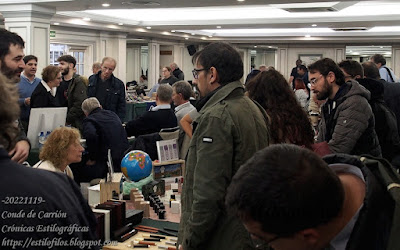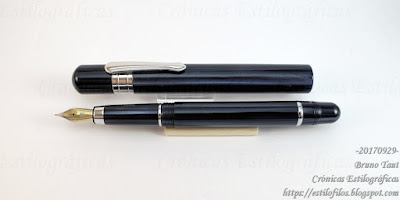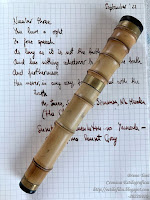The odds were not in favor, though. New hotel with last minute problems, a sense of uncertainty regarding the coronavirus, some passivity in the local community, conflicts with a couple of dealers...
But 70 dealers and about 1800 visitors –official figures provided by the organization— prove it was a good event.
There was a mild renovation in the list of dealers with respect to pre-pandemic editions. Some retired, some were not willing to travel. But there are others willing to fill in. A minor side effect of this renovation was a higher presence of inks in the Madrid Pen Show.
Re visitors, the Spanish pen community had shown a remarkable lack of enthusiasm in online fora. Lack of reliable information about the event was at the heart of it, but it was corrected in time and aficionados did attend the event. And not only the domestic community came, but visitors from other European countries and even from the US.
The Madrid Pen Show is a free-entry show—the costs are covered by the table fees (about EUR 300/table this year). That makes it a very welcoming event for casual observers and for families, and encourages the social aspect of it. After all, a pen show is the perfect excuse to meet like-minded people even if you did not want to buy anything.
So this was the Madrid Pen Show in 2022, The test posed by the coronavirus pandemic seems passed, and now the challenge is dealing with the economic crisis ahead of us. But that will be in 2023,
Video courtesy of José Riofrío.
My thanks to Mr. JMBS and to Conde de Carrión for the pictures, and to Mr. José Riofrío for the video.
Hongdian N6 – Montblanc Black
Bruno Taut
November 28th, 2022
etiquetas: evento, Madrid
Bruno Taut
November 28th, 2022
etiquetas: evento, Madrid


































































